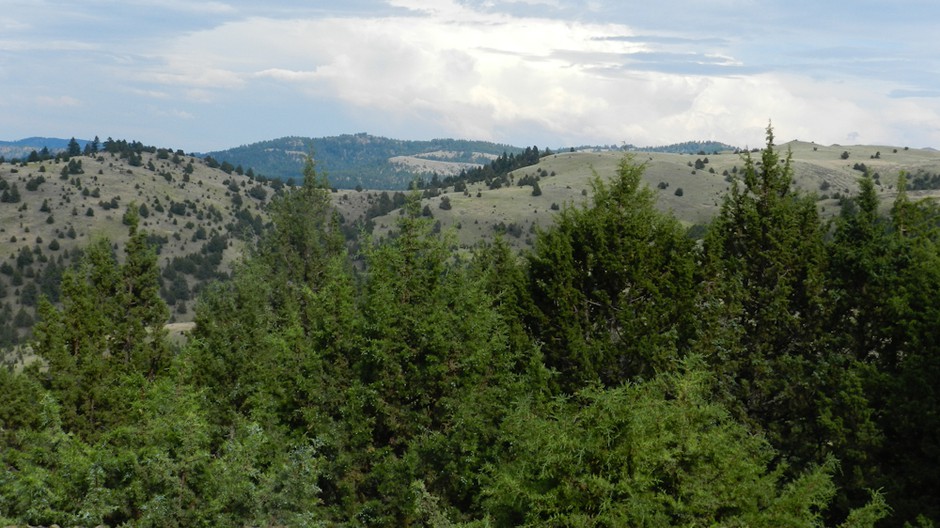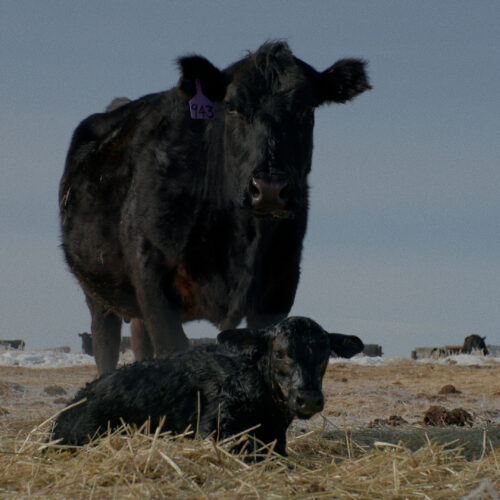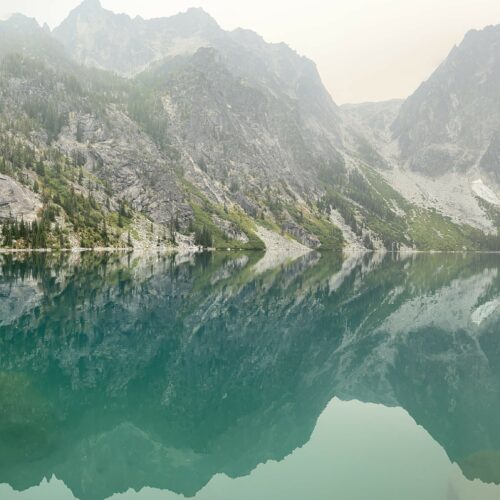
The Northwest Juniper Lumber Industry Is Poised For A Healthy Bump
Listen
Byrne Miyamoto is finished with juniper. At least he wants to be.
For the past three years, the Oregon State University graduate research assistant has been hauling juniper from Eastern Oregon and cutting it up to avoid knots.
“Getting a small clear sample out of a tree that is twisted and has knots everywhere is very difficult,” he said with a chuckle.
Miyamoto would then run the knot-less boards through a series of tests at the university’s wood testing lab.
He’d crush pieces. He’d sheer off chunks. He’d smoosh the grain to see if it would compress. He infected it with fungus to see how quickly it decomposed. And he tested how much weight a two-foot span would hold.
“Think of this kind of like a span for a deck. So if you put a two-by-four and you have it on a joist and you step in the middle of it… how much flexibility it would have before it would break,” Miyamoto said.
Each test had to be done repeatedly, and each piece of wood took 10-15 minutes. It made for long days in the lab.
“There were times when I’d bring my laptop, do some homework, check email. And then if (it was) a really dead school time, I’d just Netflix,” Miyamoto said.
But there was a purpose. This kind of information about western juniper just wasn’t known. With the data Miyamoto gathered, a set of use guidelines — or design values — were created. And this spring, western juniper was added to a publication called the National Design Specifications for Wood Construction – a sort of bible for builders in the United States.
“They need to be able to open the document, go to the species, the grade, the size of the timbers, and look at the value,” said OSU wood sciences professor Scott Leavengood. “And if they don’t see it in there, they’re taking a pretty calculated risk of going with a species they don’t know anything about.”
In this situation, they’ll likely look for another product. But with the listing of western juniper, it opens up a whole new world for the wood.
Abundant Resource
Western juniper trees are native to the high desert of the inland Northwest. Most of the range is in Eastern Oregon. But after more than a century of fire suppression, grazing and climate change, they’ve expanded far beyond their original range.
There’s been a push to create a juniper wood products industry to get some of those trees off the landscape. But western juniper processing and sales is still a fledgling industry in the Pacific Northwest.
Up until now, juniper has been relegated to use as firewood, to frame raised garden beds, and for the occasional rural fence post. But with the development of the design specifications, that should change.
Leavengood says juniper has fantastic durability – meaning its well suited for outdoor use. The wood also has high compression strength, something sought out for construction products like sill plates (the piece of lumber that joins a house’s foundation with its frame).

OSU researcher Byrne Miyamoto monitors how much weight a piece of Western Juniper can hold. CREDIT: JES BURNS
In addition, getting these so-called design values for the wood means that public agencies – like the Oregon Department of Transportation or even the National Parks Service – will eventually be able to use juniper for construction projects.
In fact, ODOT partially funded the research, realizing that local western juniper could be an alternative to chemically treated wood for signposts and guardrail construction. A department spokesperson said there aren’t currently plans to use juniper. State purchasing guidelines require an additional layer of approvals happen in advance.
And that’s good news for entrepreneurs like Duncan Livingston, whose family owns a large ranch near Bonanza, Oregon.
“At this point, there’s a lot of juniper out there,” Livingston said of rangeland near his home.
The ranch is utilizing federal conservation grants to cut thousands of acres of juniper on their property. Livingston recently bought an industrial-grade bandsaw that can be towed behind his truck. He hopes to use this mobile sawmill and the downed wood to break into the juniper business.
But Livingston will need some help from the lumber market — specifically, the price buyers are willing to pay for milled juniper. And he hopes juniper’s acceptance as a wood product in the “bible for builders” will nudge up the value of juniper.
“The value … needs to increase, or a least the quantity (needs to increase) so the people trying to produce can make a living,” he said.
A co-dependency has developed between the juniper industry and this kind of publicly-funded cutting of water-guzzling juniper aimed at restoring sage grouse and other native wildlife and plant habitat.
“If they can get some financial incentive for the product that comes off of that, then that enables them to treat more acres, treat more frequently, and increase the scale of the restoration work that’s taking place,” said Ryan Temple, president of Sustainable Northwest Wood, a major buyer and seller of juniper based in Portland.
Temple said the industry has been growing at about a 30 percent annual rate since Sustainable Northwest Wood got into the business a decade ago. And the development of design standards for western juniper should help that trend continue.
“As you open up new markets, then you’re diversifying the market for the product, which creates more market security and also stabilize the market a little bit,” he said.
Temple said he is already seeing a bump in interest in western juniper in connection with the development of the national design values. And within a year, he predicts that interest will start translating to sales.
Copyright 2018 Earthfix
Related Stories:

Washington state reports 7-year peak in influenza-related deaths
The Washington state Department of Health reported on March 20th that influenza activity reached its highest levels in seven years, with the most flu-related deaths since the 2017-2018 flu season.

New film explores cattle mutilation mystery in Oregon
The film, “Not One Drop of Blood,” highlights the communities trying to solve the decades-long mystery of cattle mutilation. (Courtesy: Jackson Devereux and Lachlan Hinton) Listen (Runtime 6:00) Read Phineas

Trash piling up, wildfires too big to fight: What wild lands might look like without workers
Mountain peaks are reflected in the waters of Lake Colchuk, located in the Alpine Lakes Wilderness Area. Smoke from a nearby wildfire hangs in the air. (Credit: Theresa Rivers) Listen















